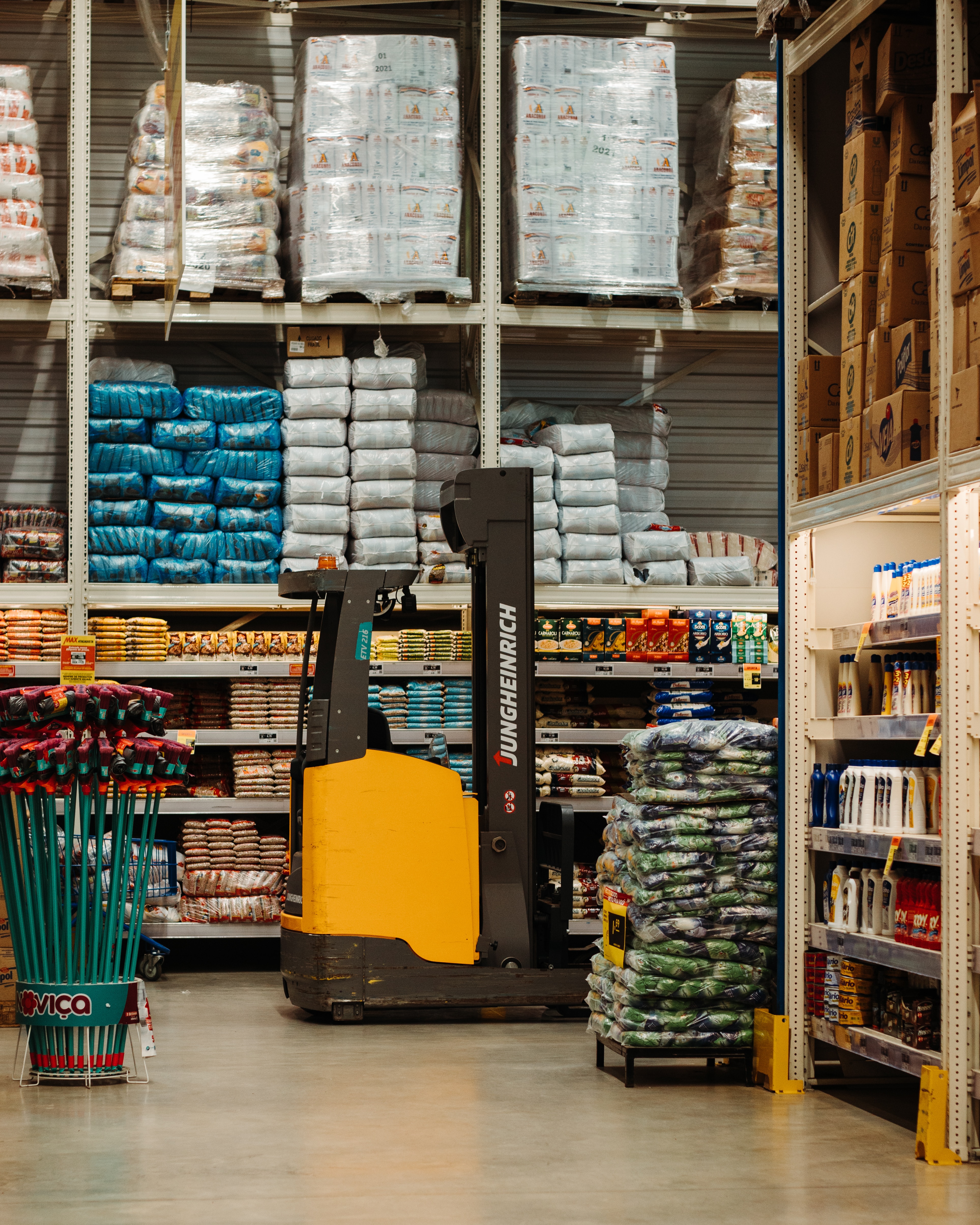Why Competitor Monitoring is Essential for E-commerce Success
So, you're an eCommerce business owner who wants to stand out in the ever-growing online marketplace. Here's the harsh reality - there are an estimated 12-24 million eCommerce stores active across the world at any given time.
Yeah, that's a lot of competition, right?
If you are going to stand out and reach your target audience, you need to outpace your competitors. The best way to do this is by monitoring their activity and tactics closely. That's where competitor monitoring comes in.
Competitor monitoring helps you track the strategies your competition uses and identify which tactics are working or not. This data can help you optimise your own eCommerce strategy and gain an edge over the competition.
Competitor monitoring comprises two main components: benchmarking and price monitoring. These two strategies allow you to gain insights into the market to better position yourself.
Benchmarking
Benchmarking compares your performance against other market players to identify areas of improvement. This can be done either within an industry or across the board.
By monitoring competitors, you can gain insights into their strategies and understand which tactics work for them. This information can help you identify new opportunities to increase sales or reduce costs.
Price Monitoring
Price monitoring is the practice of keeping track of competitor prices to ensure that your own prices remain competitive. When you can monitor pricing, you can adjust your prices accordingly and ensure that you remain competitive. This is especially important for e-commerce businesses as the price is often one of the most significant factors influencing a customer’s decision to purchase.
Once you know what your competitors are doing and why they are doing it, you can find ways to differentiate your business and offer something unique that sets you apart from the competition. This could range from offering exclusive discounts or services to providing better customer support.
So, are you ready to maximize your e-commerce success with competitor monitoring? If so, our guide can provide you with all the information you need to ensure your business stays one step ahead of the competition.
8 Tips for Effective Competitor Monitoring
Tip 1. Identify Your Competitors
Measure twice, and cut once. Identifying the key competitors in your market and understanding their strategies is essential in building a successful e-commerce business.
How do you begin to identify your competitors? Sure, you could manually search every eCommerce store selling your products, which can be time-consuming and tedious. But if you want to be more efficient, automated tools can help you quickly identify your competitors and compare their pricing strategies.

How do you narrow down the list of competitors? Once you’ve identified your main rivals, it is vital to understand their strategies and how they differ from yours. This will help you better compete in the marketplace by understanding what works for them and why.
Are they in the same niche as you? Are their prices higher or lower than yours? Do they offer additional services that you do not?
Tip 2. Use Competitor Benchmarking to Evaluate Your Performance
Once you've identified the key players in your market, you can use competitor benchmarking to evaluate how you measure up against them.
Competitor benchmarking is an invaluable skill to master when it comes to staying competitive in the e-commerce world. Benchmarking allows you to compare your performance against industry leaders and identify areas to improve.
There are a couple of key parts of benchmarking that you need to pay attention to:
- Cost Comparison – Evaluate how your prices compare with your competitors. Do they offer more or less value than you? This will help you identify if changes are needed and provide insight into your industry's pricing trends.
- Quality Evaluation – Are there any features or services that give one of your competitors an edge? You can use the findings from this stage to inform changes you make to your own products or services.
- Service Evaluation – How do your customer service channels compare with your competitors? This can help you determine areas where you could improve, such as speed, quality, or efficiency.
Again, one of the best ways to track these metrics and monitor your competitors is to set up regular competitor monitoring. Solutions that allow for competitor benchmarking across multiple industries can scrape data from your competitors' websites and social media channels for you, making it easier to track performance over time.
Tip 3. Conduct Competitor Price Monitoring to Stay Competitive
Speaking of "scraping your competitors' websites," price monitoring plays a vital role in staying competitive. With so much pricing transparency and comparison shopping, ensuring that your pricing is up-to-date and competitive with other retailers is essential.
Price tracking tools can help you keep tabs on your competition's prices and quickly adjust yours as needed for maximum profitability. That way, you can keep your margin intact while also staying competitive and beating out other e-retailers in the market.
Tip 4. Analyse Competitor Marketing Strategies
Your competitors are likely out there trying to master the same channels you are. Pay attention to their ads, who they’re targeting, and how effective their campaigns seem.
Competitor analysis can help you identify opportunities to gain more visibility in the market by focusing on different types of customers or advertising strategies that your competitors haven't tapped into yet. You can use this knowledge to refine your own marketing strategy and drive more engagement from prospective buyers.
For instance, where are your competitors spending most of their marketing budget? If it’s on Google Ads, you might be able to create a more targeted and cost-effective campaign by leveraging other digital ad platforms like Facebook or Twitter.
Are they forgoing SEO optimization? If so, you can leverage this opportunity to rank higher in SERPs and drive more organic traffic.
Tip 5. Keep an Eye on Competitor Product Assortment
Here's a key tip you might overlook: Track your competitors’ product range. Competitors may be selling a similar or identical product to yours, impacting your sales and revenue.
True product assortment is much like a chess game. You’ll want to plan your moves carefully and be mindful of how your competitors respond. You can track competitor product assortment by regularly checking their online store, setting up price alerts, or automating competitive intelligence.

Tip 6. Monitor Competitor Reviews and Feedback
The bread-and-butter of competitor monitoring occurs in the form of reviews and feedback from customers. Reviews can give you an edge in the market in two distinct ways:
- You can use competitor reviews to understand customer sentiment for a particular product or service. This helps you refine your product offering, better anticipate market trends, and ensure you’re meeting customer expectations.
Are customers unhappy with a competitor’s customer service? Make sure yours is consistently excellent. Do they show particular interest in a specific feature? Make sure you have it. - You can also use competitor reviews to gain insights into how they are positioning their product or service. For example, if a competitor emphasizes free shipping, you can offer the same. Or, if they are promoting certain products more than others, you may want to do some research and decide whether or not it makes sense for your company to follow suit.
Tip 7: Stay Updated on Competitor SEO Tactics
You knew we'd bring it up - and here it is. SEO is an integral part of competitor monitoring in the e-commerce space.
There are plenty of tools available that will help you track keyword usage and ranking for your competitors. Use them to stay ahead - being aware of changes and updates can give your business a significant edge over your competitors.
SEO involves a variety of tactics, so be sure to pay attention to everything from meta descriptions and structured data to link-building strategies. Optimising your store for the right keywords and keeping an eye on your competitors can help you outrank them in search engine results pages (SERPs).
Tip 8: Utilise Competitor Monitoring Tools
If you've read this far, you're likely overwhelmed by the sheer number of things to keep an eye on in your competitor monitoring toolset. Luckily, there are tools that can help you stay competitive with minimal effort.
Competitor monitoring tools are critical for creating an effective e-commerce strategy. They allow you to track competitors’ prices, browse their product catalogues, monitor changes in traffic and keyword rankings, analyse customer reviews and more.
By keeping tabs on your competitors' moves, you'll be able to spot trends, capitalise on opportunities and make the right decisions at the right time.
Plus, with a single analytics dashboard, you can easily compare metrics and quickly benchmark your performance against competitors. This allows you to identify weaknesses in your approach and make adjustments where necessary. You can also use competitor monitoring tools to keep track of their prices and never be left behind on the market.
Podcast
This blog post is supported by an accompanying podcast. A full transcript is available here.
Available to listen now on Spotify:
Available to listen now on Apple.
Available to listen now on Radio Public.
Available to listen now on all other major podcasting platforms.
FAQ
How often should businesses engage in competitor benchmarking?
As an eCommerce business, you should be benchmarking your performance against competitors on a regular basis. Doing so will help you spot trends and opportunities in the market and identify weaknesses in your approach.
It is recommended to check competitor data at least once a month for best results. But depending on your industry and sector, you may want to increase the frequency.
What are some tools or software available for competitor monitoring?
There are various tools on the market today designed to help eCommerce businesses monitor their competition. One of the most popular and effective options is a competitor benchmarking tool, which automates the process of collecting and analysing data from competitor websites.
Other tools include competitor price monitoring software, which tracks changes in your competitors’ prices over time, and analytics platforms that provide insights into website traffic and customer behavior patterns. With these tools, you can identify new opportunities or react quickly to changes in the market.
What are some key metrics to track for competitor price monitoring?
Metrics make up the foundation of any successful competitor monitoring strategy. To get the most out of your competitor's price monitoring efforts, it’s crucial to track the following metrics:
- Price Levels: This metric tracks the price of a product or service over time to give you an idea of how your pricing compares with that of competitors.
- Promotional Offers: Tracking discounts and special offers from competitors can help you identify opportunities to stand out in the market and areas where your pricing may be uncompetitive.
- Price Changes: Keeping an eye on when prices change among your competitors helps you stay ahead of the competition and adjust your own prices accordingly if needed.
- Customer Reviews: Analyzing customer reviews for competing products allows you to spot any weaknesses in their offerings and areas where they have succeeded so that you can adjust accordingly.
- Search Volume & Trends: By tracking search queries related to a product or service, it’s possible to get insight into what customers are looking for regarding features and benefits – allowing you to position yourself accordingly against other companies offering similar products or services.
- Price Comparison: Regarding e-commerce, price comparison is an essential part of competitor monitoring. You can use online tools to compare prices and ensure your own are competitive without devaluing your product or service.
Stay Ahead of Your Competition with BlackCurve
By implementing these strategies into your competitor monitoring strategy, you’ll give yourself the best chance of succeeding in a highly competitive market – allowing you to develop the perfect balance between pricing, features, and customer service to ensure long-term success for your business.
At BlackCurve, we believe in helping eCommerce retailers and brands get the edge over their competition. We offer a tailor-made competitor monitoring solution that provides you with benchmarking, price monitoring, and more – so that you can stay ahead of your competitors in the eCommerce landscape.
See how BlackCurve can help you monitor your competitors. and ultimately give you an edge. Our solution is designed to give you the insights and data you need to make informed decisions to ensure success in a highly competitive market. Subscribe to our podcast to see more great insights into the world of eCommerce, and keep your finger on the pulse of your competitors!

